The period of production from 1848 to the 1930s is considered the golden era of mining. During this period, the bulk of all the rich gold districts of the West were discovered. These discoveries drove exploration and settlement of the vast American West, a geographic area that was mostly wilderness before this time.
Hundreds of gold districts were established across the western states. Of the 508 distinct gold districts identified in the western states by the USGS, these the top 25 gold producers.
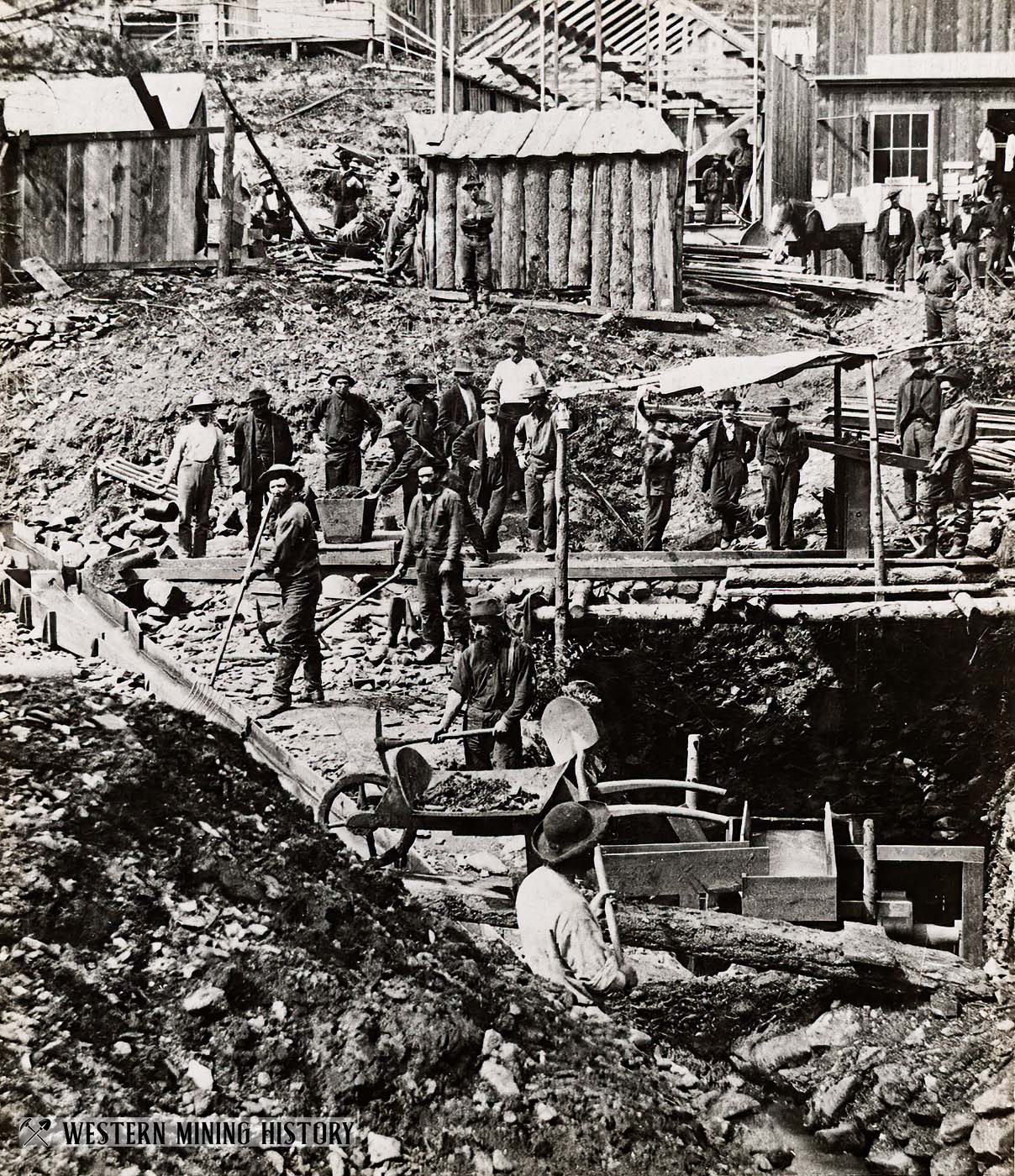
The information in this article is based on data compiled in the 1965 USGS publication Principle Gold Producing Districts of the United States. According to the USGS report, about one-half of the gold mined in the United States has come from the 25 districts listed in this article.
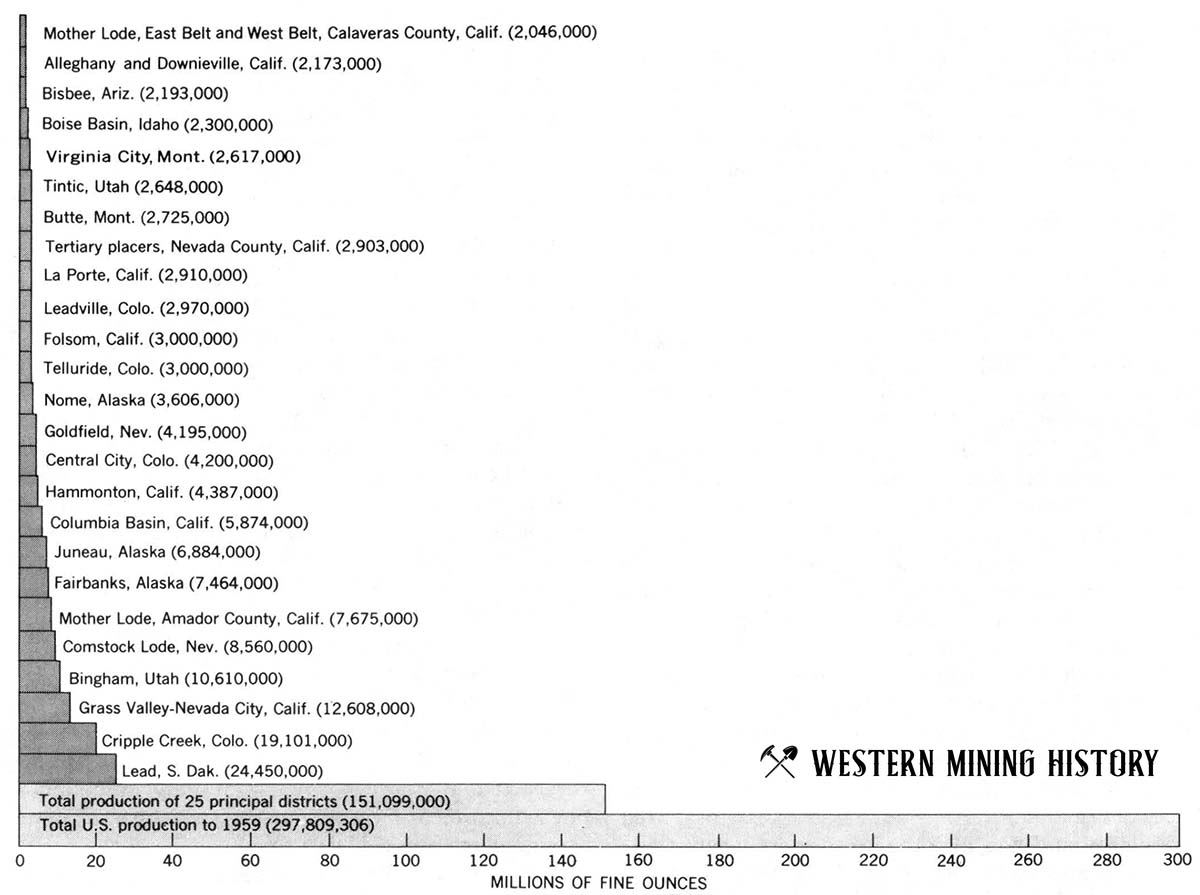
While modern mining over the last few decades have caused some changes in these rankings, we are interested in the historical production numbers during the golden age of mining as the production that occurred during this time built the hundreds of camps and towns that make the West so historically significant.
Note that dollar values for gold production noted in this article would be much greater with the current value of gold.
25. Mother Lode – East and West Belts, Calaveras County, California
Many California gold districts get short-changed in this list due to the fact that the massive amounts of placer gold recovered prior to 1880 were largely unrecorded. The 2,045,700 ounces credited to this area are primarily from lode mines that operated between 1880 and 1959.
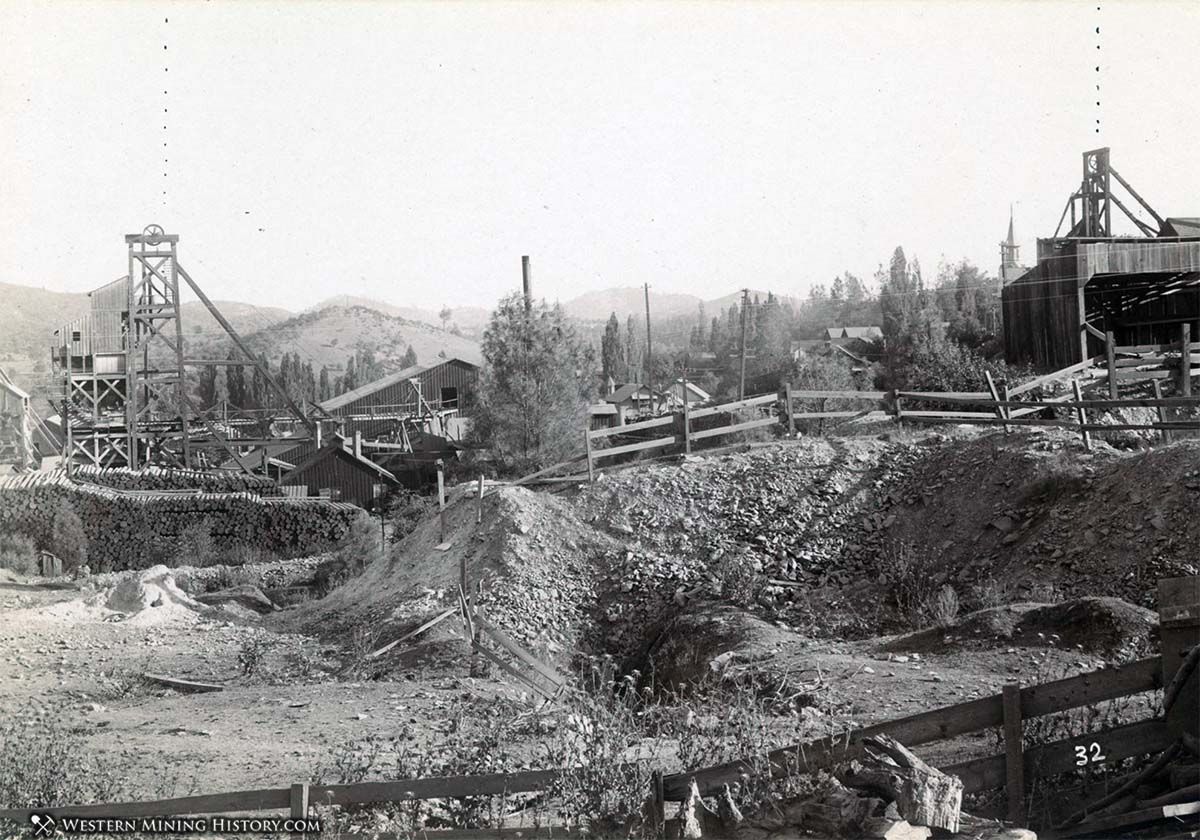
The Mother Lode, East Belt, and West Belt districts compose a north-trending belt in the western part of Calaveras County that contains about 800 lode mines and prospects. The mines on Carson Hill, the Utica and Gold Cliff, and the Sheepranch mine are some of the top gold mines in the area.
Important mining towns in this area include Angels Camp, Mokelumne Hill, and San Andreas.
24. Alleghany and Downieville, California
The Alleghany and Downieville districts, about 5 miles apart in the southern part of Sierra County, are considered as one area for the purpose of this report. The lode mines have been productive since the early 1850’s, and their total production through 1959 was 1,590,990 ounces.
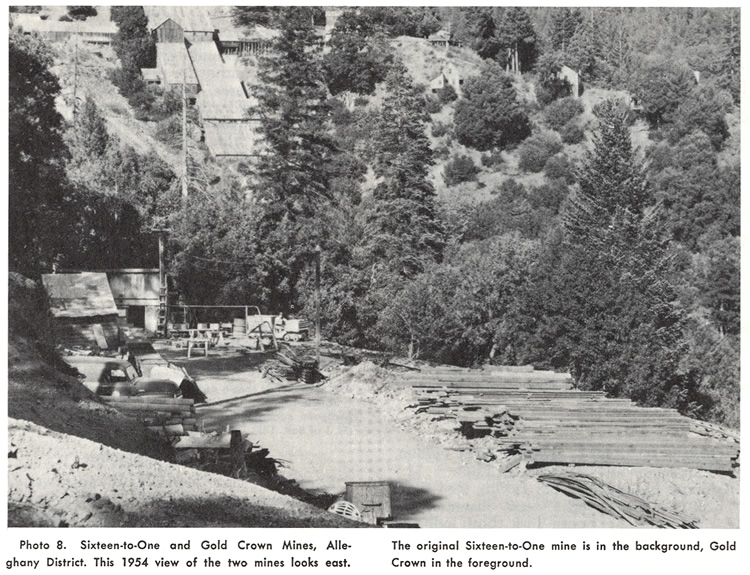
Lode mines developed slowly because of the rich yields of the placers in the early years, but by 1898 they were the chief source of gold in the districts. The Sixteen to One mine, the most productive in the Alleghany district, had a total output of about $9 million in gold to 1928. The Sixteen to One mine has been active in recent years.
23. Bisbee, Arizona
The Bisbee (or Warren) district is in the southeastern Mule Mountains, in the southern part of the county, immediately north of the Mexican border. Although the Bisbee district was the largest gold producer in Arizona in 1959, most of its gold was a byproduct of copper ore.
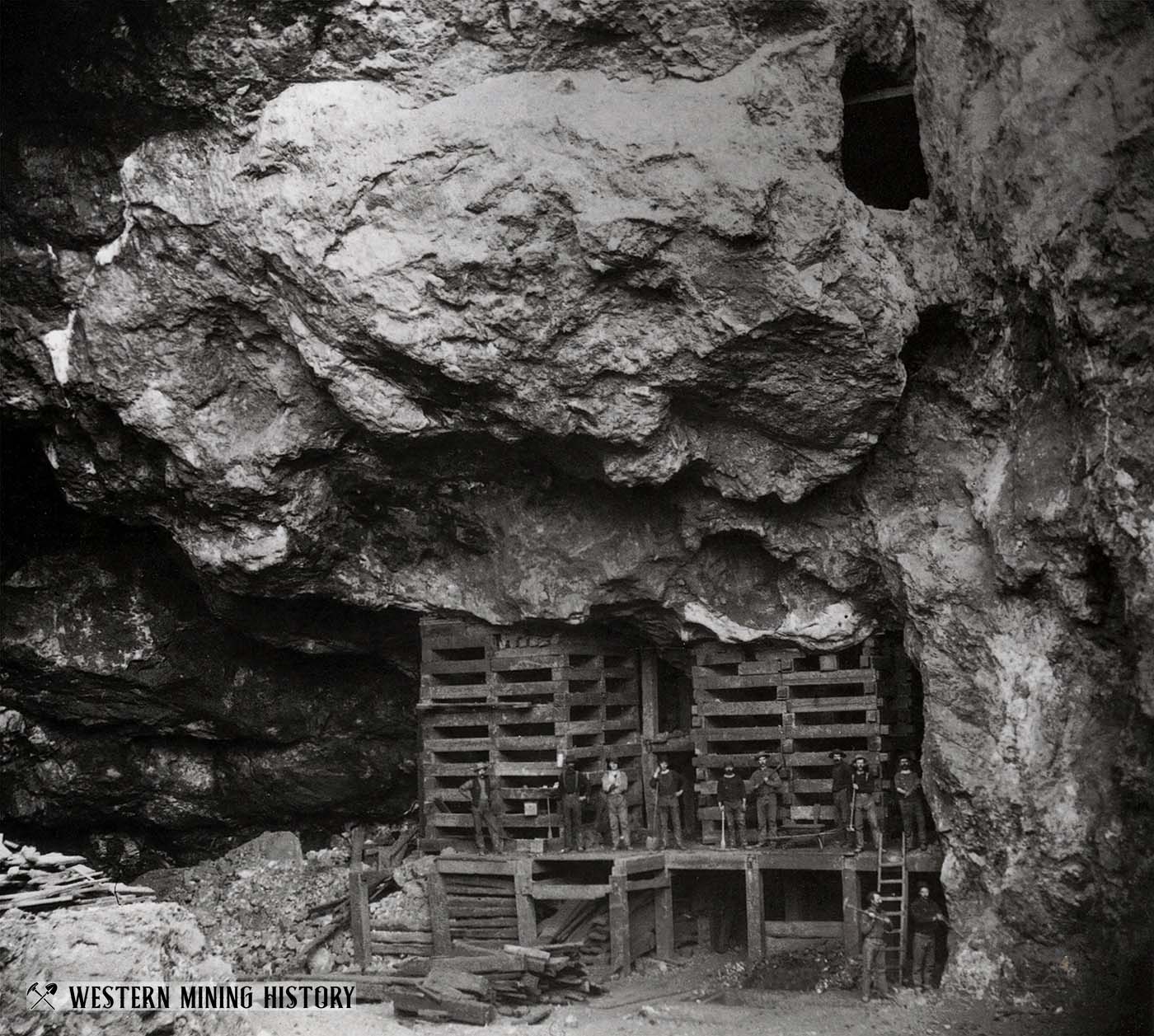
The gold production of the Bisbee district before 1895 was not ascertained. From 1895 through 1929 the district produced 1,110,058 ounces of gold, and from 1930 to 1959, a total of 1,082,765 ounces was produced. Total gold production through 1959 was about 2,193,000 ounces.
22. Boise Basin, Idaho
All the districts in the Boise Basin have a common history related to the original placer discoveries in 1862 and subsequent development of both placer and lode gold mines. The first placer discoveries in Boise County were made in this area in 1862. Most of the county’s gold production came from the rich placers during the first few years of mining.
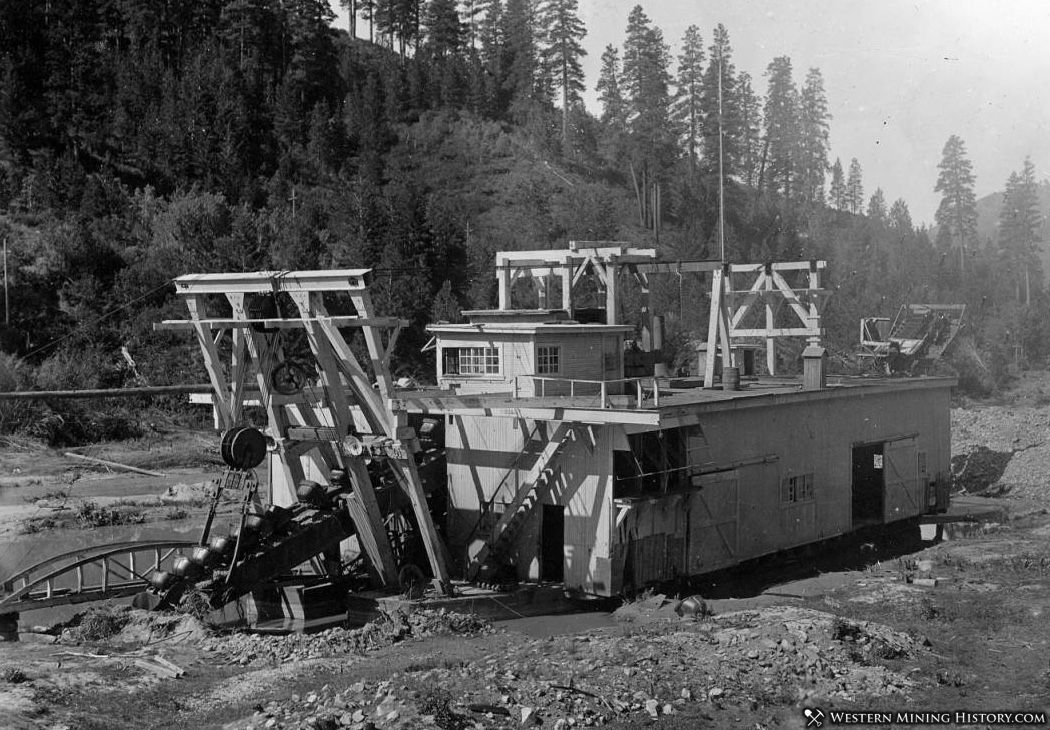
Estimated production from 1863 to 1896 from the Idaho City camp was valued at $44,651,800 (2,167,500 ounces). The district produced 129,038 ounces from 1939 through 1958; its total production was about 2,300,000 ounces, mostly from placers.
21. Virginia City, Montana
The Virginia City-Alder Gulch district, which includes the Summit area, is in central Madison County at the south end of the Tobacco Root Mountains. It is the leading producer of placer gold in Montana and has also produced a small amount of lode gold.
The discovery of rich gold placer deposits in Alder Gulch in 1863 marked the beginning of mining activity in Madison County. Gold-quartz veins were discovered in the district later in the year.
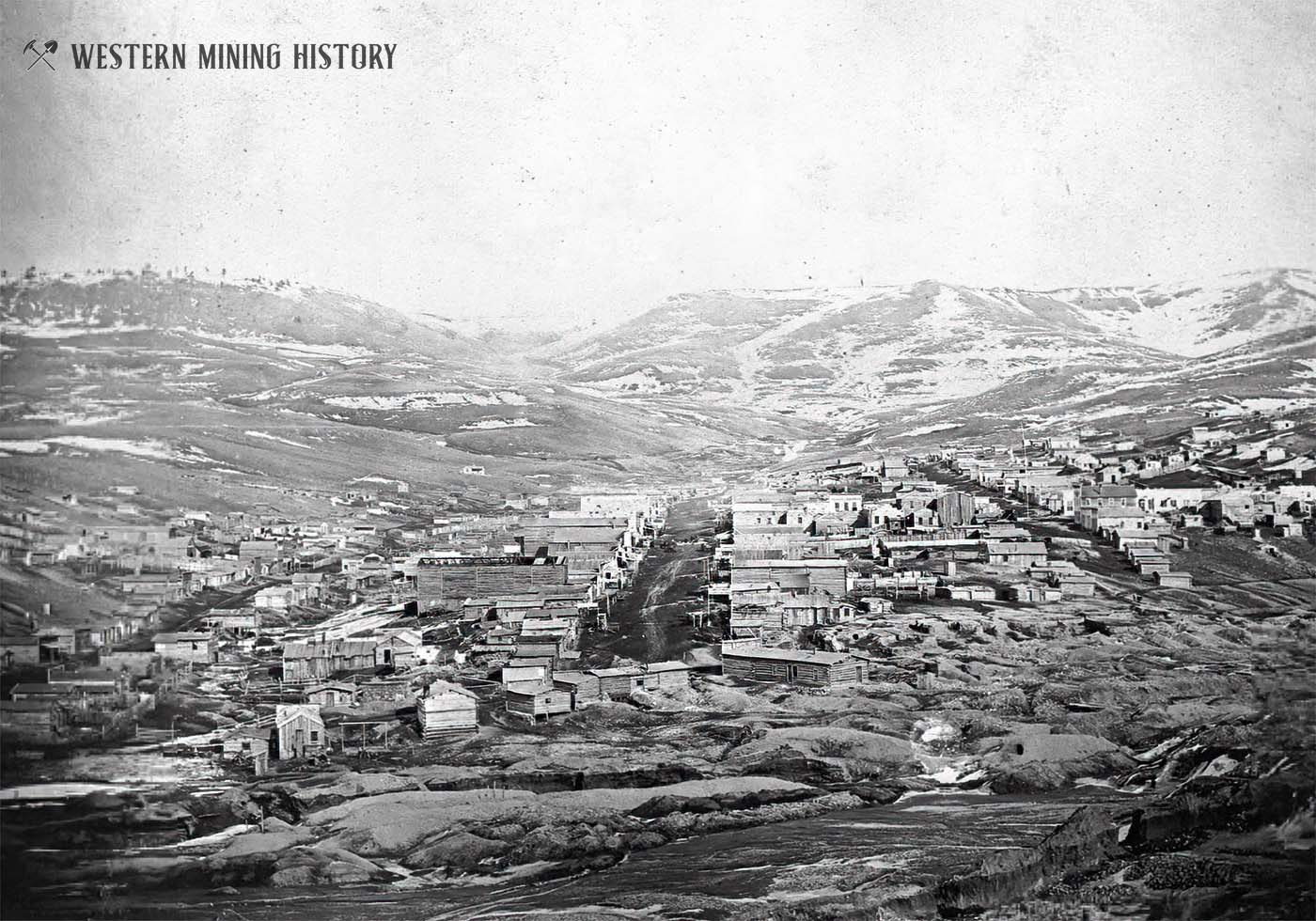
The richness of the placers attracted hordes of prospectors to the area, and within 18 months Virginia City boomed to a town of 10,000 people. Within 3 years, placer gold valued at $30 million was recovered from Alder Gulch and its tributaries.
Various estimates have been made regarding production of the Alder Gulch placers before 1904. In addition to the $30 million produced during the first 3 years (1863-66), it is estimated that Alder Gulch and its tributaries yielded $42.75 million from 1867 through 1903.
20. Tintic, Utah
The Tintic district, which includes the East Tintic district in Utah County, is about 60 miles south of Salt Lake City in the central part of the East Tintic Mountains. Eureka, the principal town, is near the center of the area.
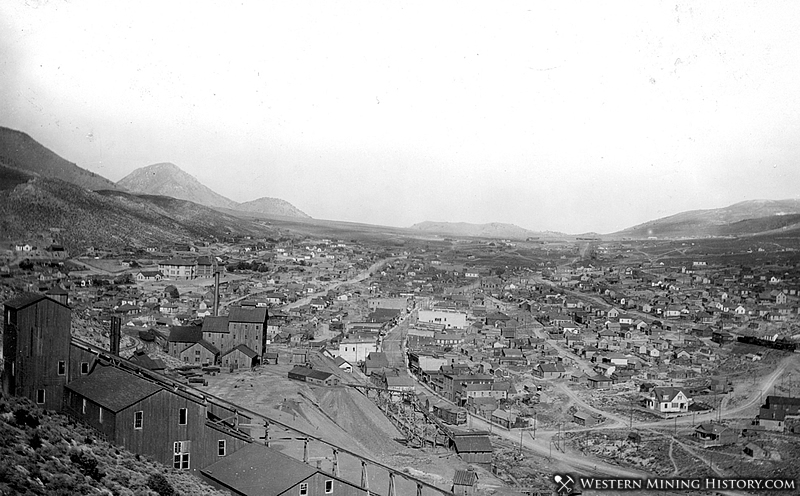
One of the three most important mining districts in Utah, the Tintic yielded about $428,000,000 worth of silver, lead, gold, copper, and zinc through 1959. Of the 2,648,000 ounces of gold produced through 1959, about 65 percent came from the main Tintic district and about 35 percent from the East Tintic.
The principal mines were the Chief, Centennial Eureka, Mammoth, Gemini, Eureka Hill, Iron Blossom, Tintic Standard, North Lilly, and Eureka Lilly.
19. Butte, Montana
The Butte (Summit Valley) district is in northeastern Silver Bow County in the vicinity of the city of Butte. More than 90 percent of the annual mineral output of Montana comes from the Butte district, one of the great copper camps of the world. Gold has been a byproduct of the copper ores, although some gold was mined from placers before 1875.
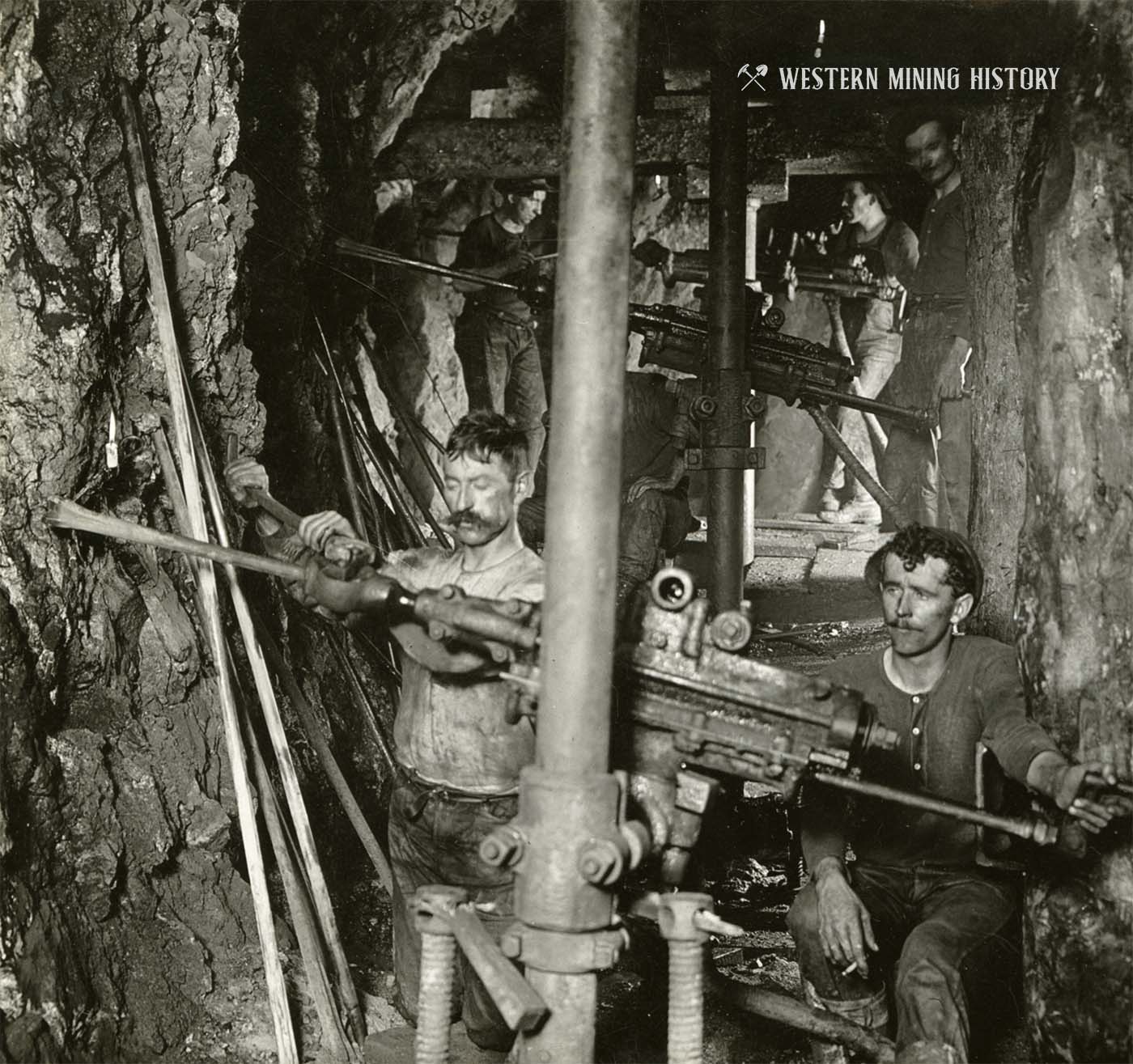
The total gold production of Butte through 1959 was approximately 2,725,000 ounces, which includes about 363,000 ounces of estimated production from placers in the district.
18. Tertiary Placers – Nevada County, California
The Tertiary placer districts include the placer deposits in the following areas: San Juan Ridge, North Columbia, Sailor Flat, Blue Tent, Scotts Flat, Quaker Hill, and Red Dog-You Bet.
Most of the placer production of Nevada County before 1900 came from hydraulic mining of the Tertiary gravels from these localities. The production of individual areas is not known, but it is estimated that their aggregate production through 1909 was at least $60 million in gold. After passage of the California Debris Commission Act of 1893, many operators closed down, even though huge reserves of auriferous gravels still remain in these areas.
17. La Porte, California
The La Porte district, in southwest Plumas County, was the center of hydraulic mining of gravels of the Tertiary Yuba River in the 1850’s and 1860’s. The town of La Porte was the most important settlement in the district. After the enactment of debris control laws, the gravels were worked by drift mines on a much-reduced scale.
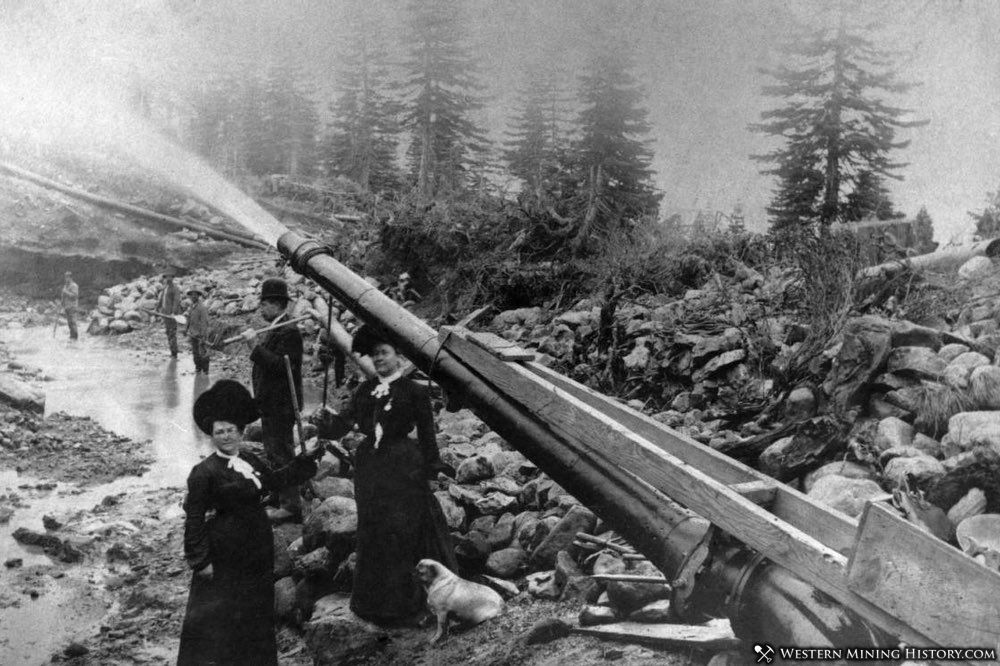
Total production from 1855 through 1959 was about 2,910,000 ounces. A small amount of production was reported in 1957, but none was reported in 1958-59.
16. Leadville, Colorado
After rich discoveries in the spring of 1860, the placer camp called Oro City was settled and by July boasted a population of 10,000. The placers, though rich, were quickly depleted, and within 3 or 4 years only a few hundred of the more persistent souls remained. It was reported that $2 million in gold was taken out the first summer, and the placers continued to be productive, but at a diminishing rate, until 1886.
In June 1868 gold lodes were discovered which were mined with great success until 1877, after which gold production was overshadowed by silver and lead.
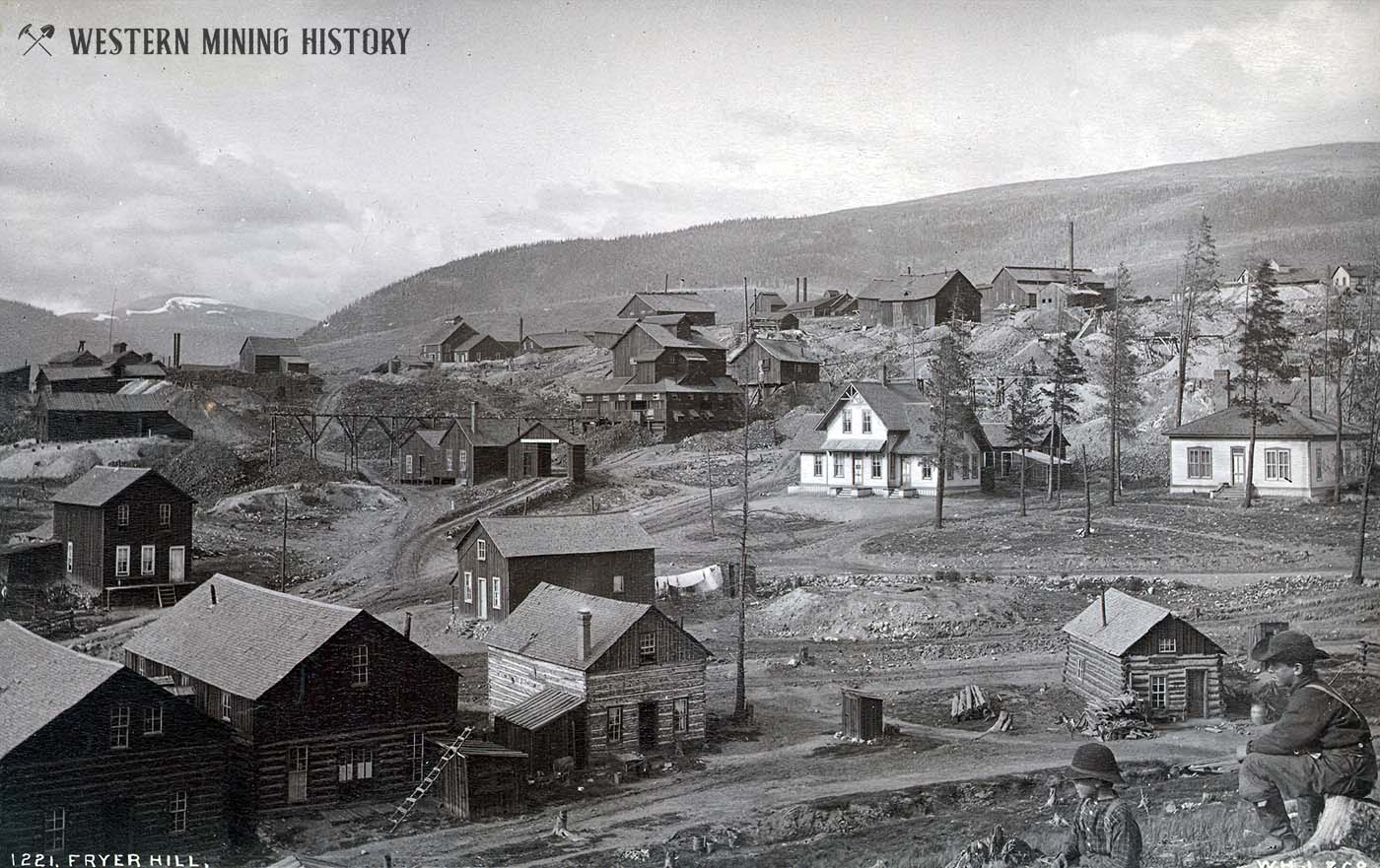
The mining of rich silver-bearing lead carbonate ore began in the summer of 1874 and brought great prosperity to the Leadville district, especially from 1876 until 1902, which was the most productive period in its history. The period of general prosperity, however, was marred by declining silver content of the ores, by the financial depression of 1893, and by labor troubles. As a result, there was increased prospecting for gold which culminated in increased gold production from the Breece Hill area after 1893.
Gold continued to be an important commodity through 1917, though its proportion of the total output of the district was overwhelmed by the development of the huge zinc ore bodies after 1903.
The Leadville mines closed in 1957, and from 1957 to 1959 only small amounts of gold were recovered from fluxing material. The total gold output of the district through 1959 was about 2,970,000 ounces.
15. Folsom, California
The Folsom district is located along the American River, in the northeast corner of Sacramento County.
In 1899 the first bucketline dredge used in Sacramento County was installed at Folsom. Before this the gravels were mined by drift and hydraulic methods. Huge electrically powered draglines and dredges were introduced in the late 1920’s and 1930’s, and some of these continued operating into the 1950’s
The total production of the district through 1959 was at least 3 million ounces, most of which is attributed to large-scale dredging.
14. Telluride, Colorado
The first discoveries in the Telluride district were made on the Smuggler vein in 1875. There was only a small production through 1882, but in 1883 a shipment of 4 tons of high-grade ore from the Smuggler vein yielded 800 ounces of silver and 18 ounces of gold per ton and thereafter production increased rapidly.
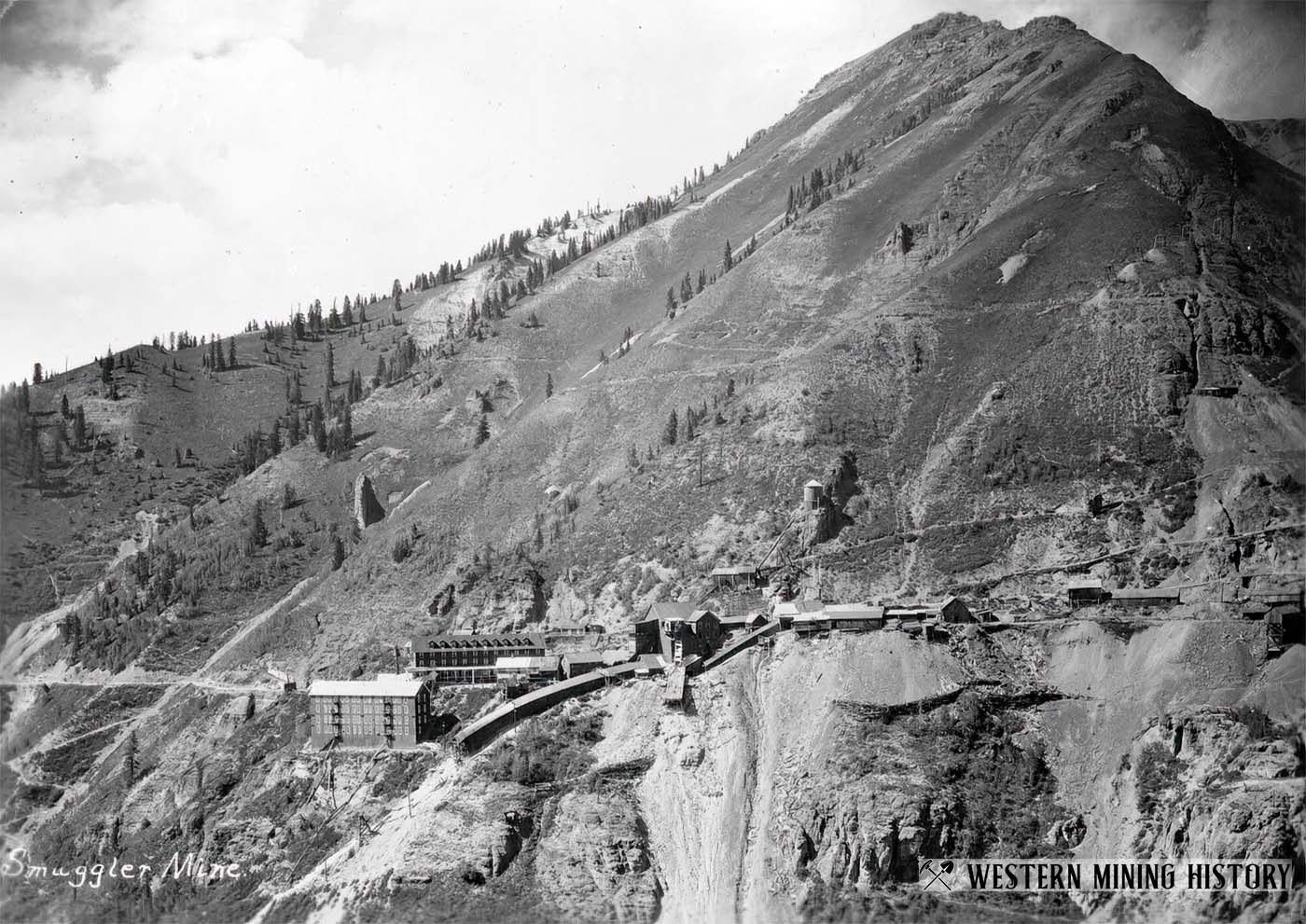
Since 1898, the large output of the Telluride district has come chiefly from the mines of three large companies the Liberty Bell, Smuggler-Union, and the Tomboy. In 1940 the Smuggler-Union group of mines and the Tomboy holdings were organized as the Telluride Mines, Inc., which was still active in 1959. Total production of gold through 1959 was at least 3 million ounces.
13. Nome, Alaska
The first claims were staked on Anvil Creek in 1898, the start of the excitement that resulted in a gold rush early 1899. The original settlement was called Anvil City, and it reportedly had 10,000 people living there the first year, most of them in canvas tents. The name of the settlement was soon changed to Nome.
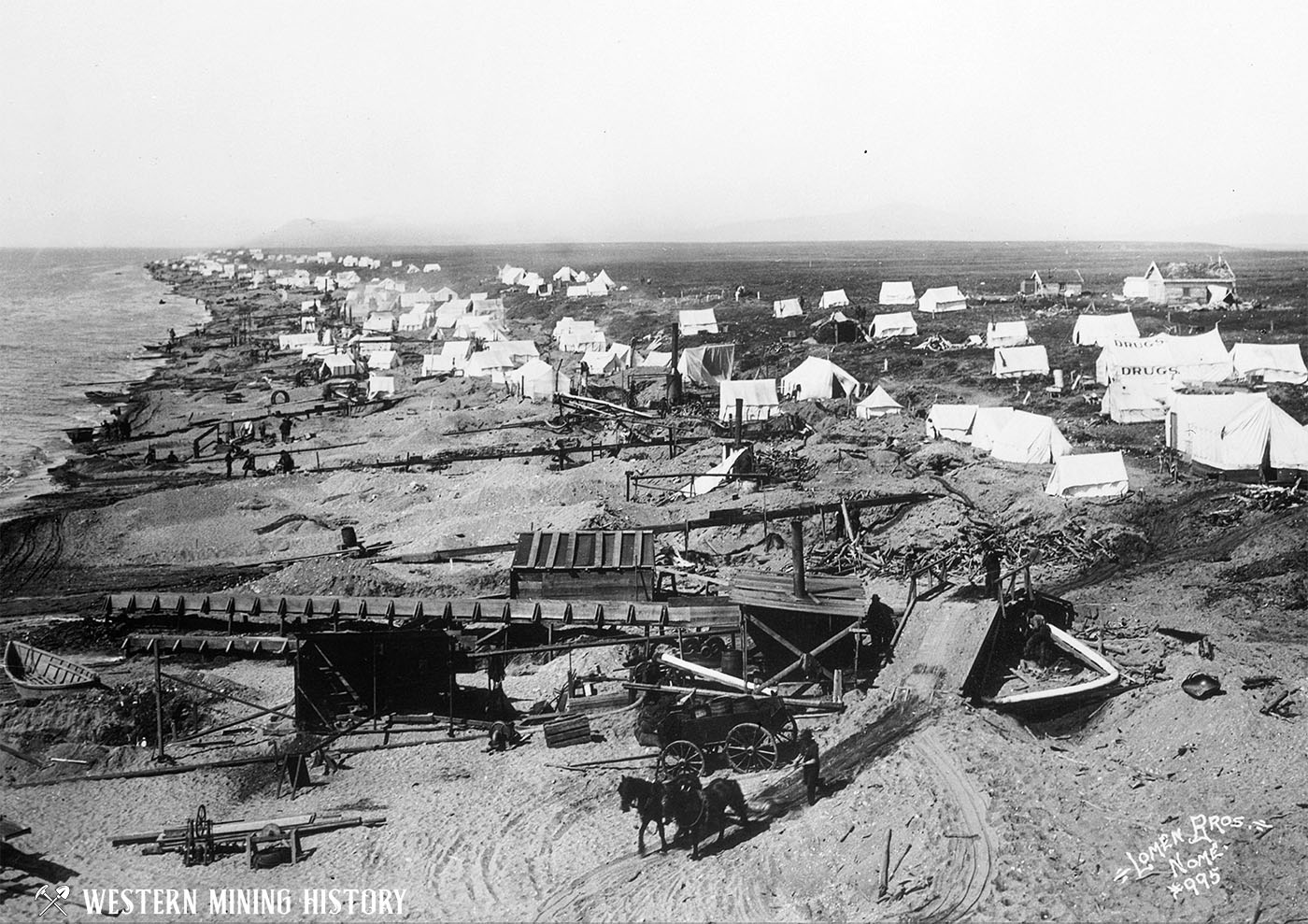
Production of the district from 1897 through 1959 was about 3,606,000 ounces of gold, almost all production was from placers. Small but undisclosed production from scattered lode claims was reported in the district. The Nome district, one of the major producers of Alaska, was active in 1959.
12. Goldfield, Nevada
Gold was discovered in the district in 1902, but no important shipments were made until 1904 during a brief period of high production. In 1905 the district declined because of exhaustion of many of the high-grade ore shoots. In 1906 important new discoveries on the Mohawk property spurred exploration and development throughout the district.
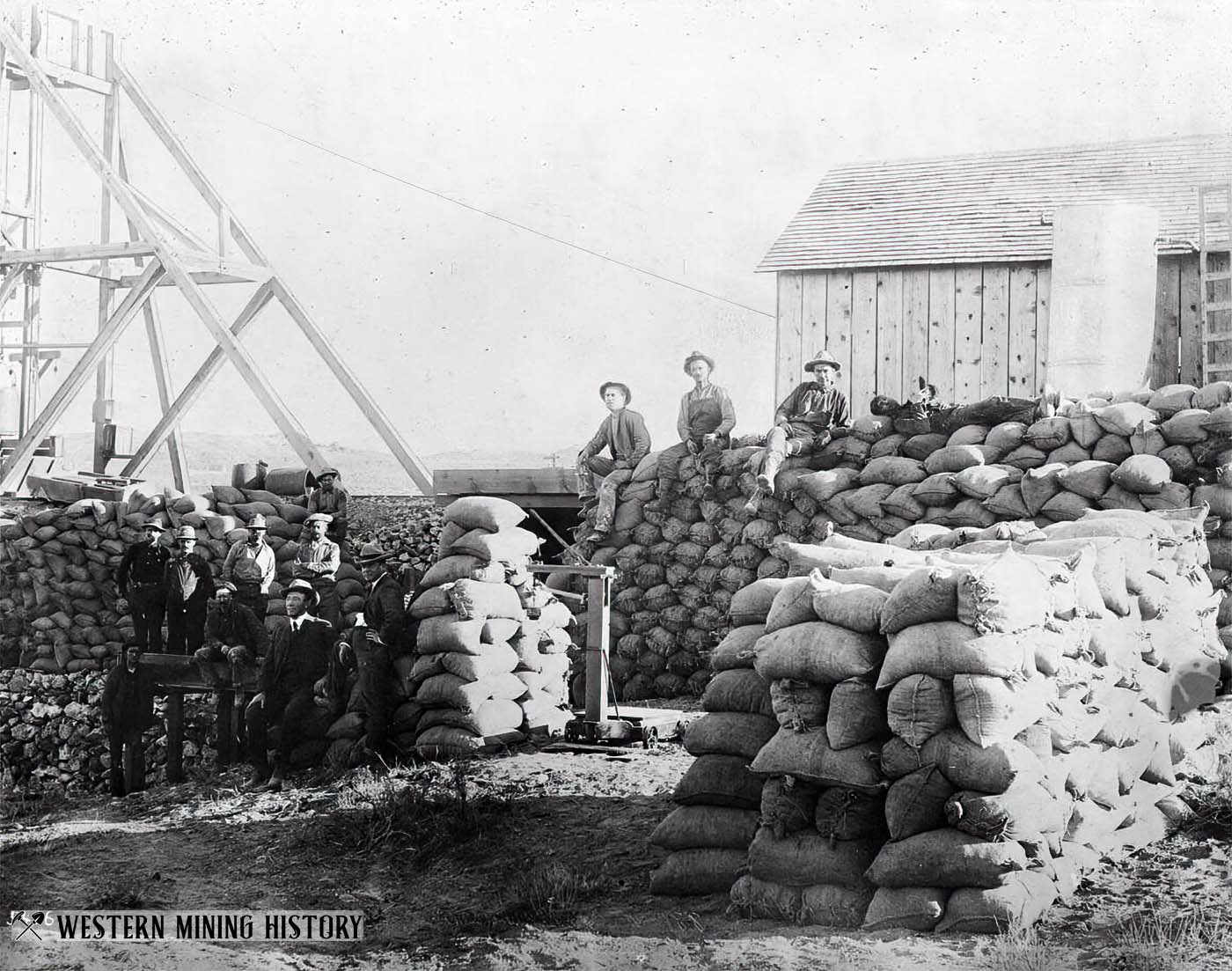
Goldfield experienced one of the most dramatic rises and subsequent crashes of all the mining towns of the West. By the 1910s ore production was already in steep decline. The ore deposits were discovered to be very rich near the surface, but very shallow as well. By 1918, Goldfield’s mining industry was all but dead. In 1923 a fire swept the city, destroying 53 square blocks.
From 1903 through 1959 the district produced about 4,194,800 ounces of gold.
11. Central City, Colorado
Colorado’s first big gold strike was made in Gregory’s Gulch in 1859. Of the numerous settlements established after the discovery, Central City was the most important. This was Colorado’s most important mining district for nearly two decades.
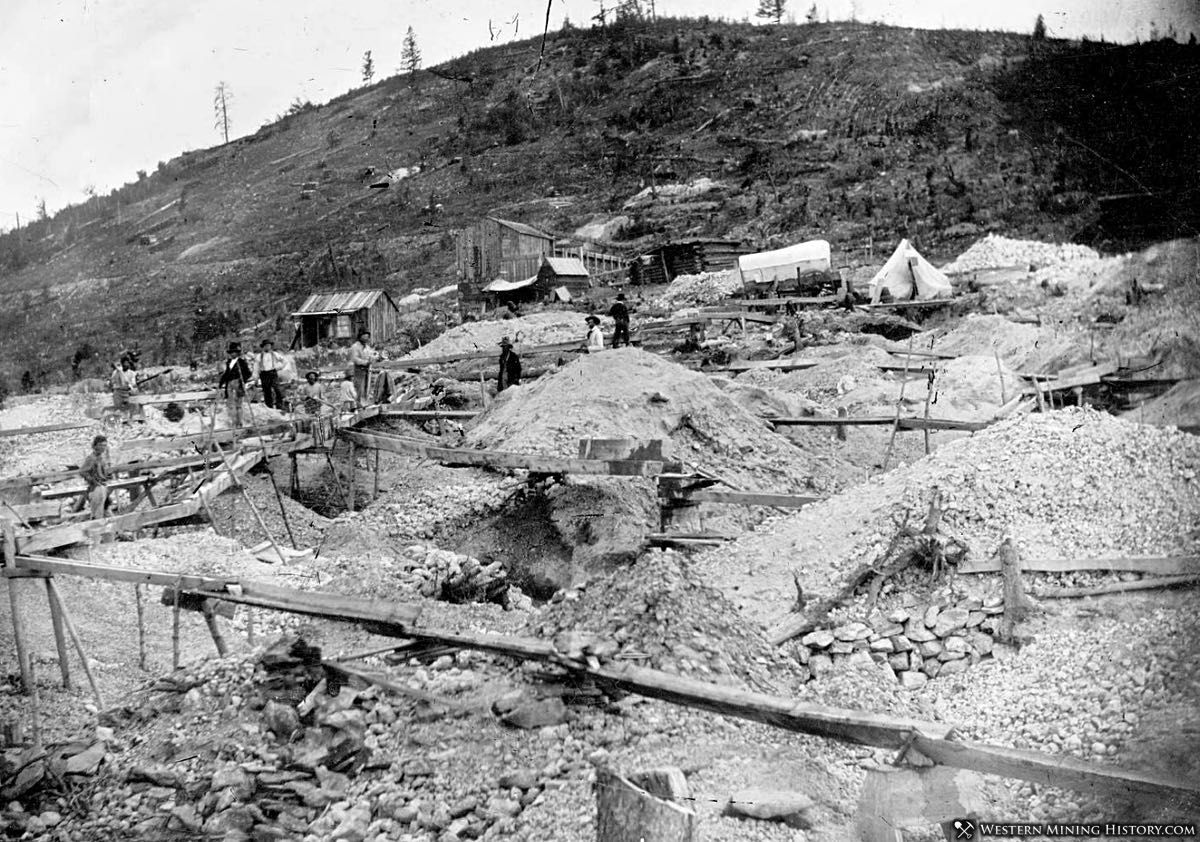
Although the mines here were overshadowed by new excitements in places like Leadville and Cripple Creek, this district remained an important producer well into the 1900s.
The district is credited with 95 to 99 percent of the $84,114,389 worth of gold mined in Gilpin County through 1923. Total gold production through 1959 was about 4,200,000 ounces; all but about 30,000 ounces was from lode mines.
10. Hammonton, California
The Hammonton district is along the Yuba River in the southern part of Yuba County. This district is unique in that the gold production here was almost entirely a product of extensive dredging.
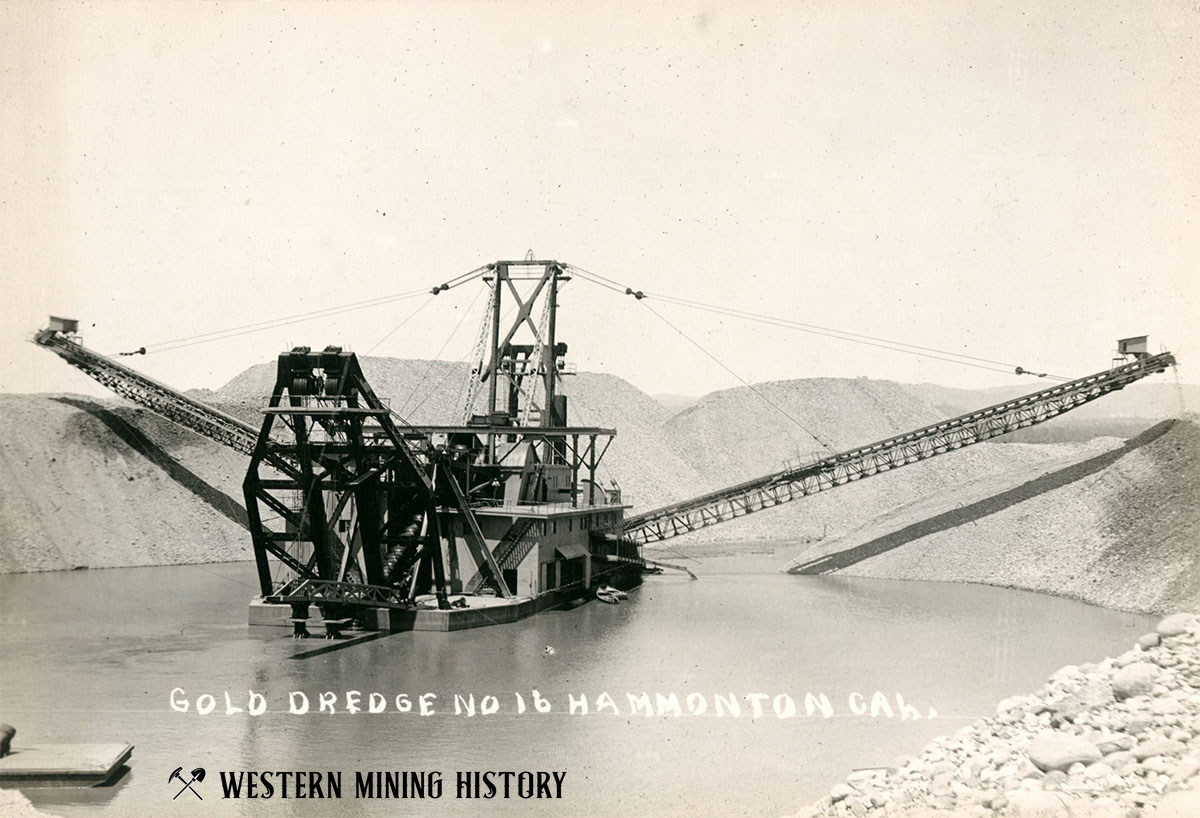
Beginning in 1903, large-scale dredging of the Quaternary gravels produced about $2 million in gold annually, and by 1949 the district had produced about $100 million in gold. In 1952 six dredges were in operation. Total production through 1959 was about 4,387,100 ounces.
9. Columbia Basin, California
From 1853, when the placers were discovered, to 1870, an area less than 2 miles in diameter – the well-known Columbia Basin (location of the town of Columbia) – produced more than $55 million in gold. Other rich deposits were at Sonora, Yankee Hill, and Jamestown.
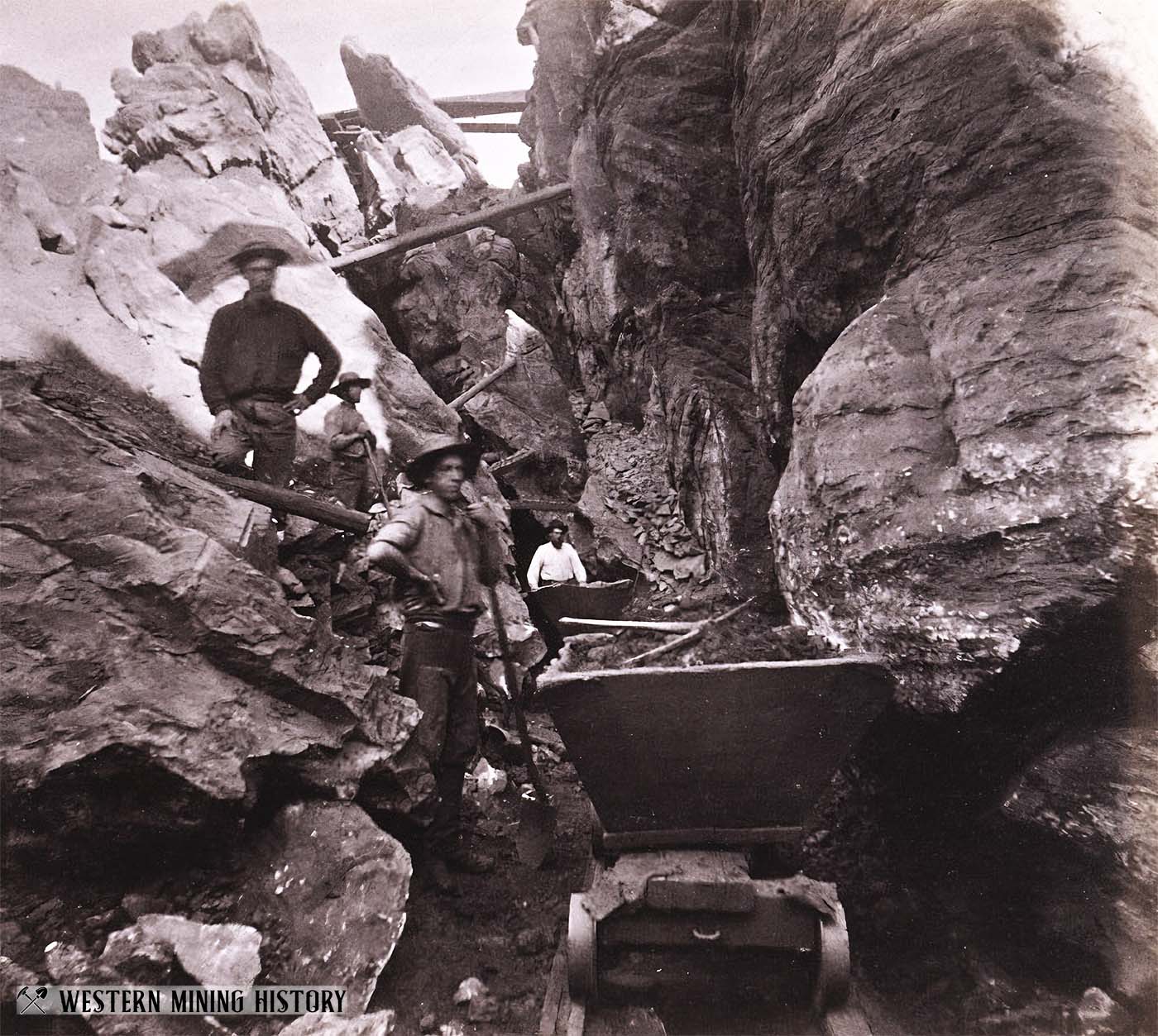
In the Columbia Basin most of the gold was extracted by hand from natural riffles and from between pinnacles on the limestone bedrock surface at the base of the gravels. In the vicinity of Jamestown and Sonora, Tertiary channel gravels were worked by drift mines.
The richest placers were exhausted fairly early and by the late 1870’s placer production dropped sharply. This trend was reversed for a short time in the late 1930’s, but production decreased after World War II. Total gold production from this area was about $121 million, or about 5,874,000 ounces.
8. Juneau, Alaska
Lode gold, which has been the mainstay of the district, was discovered in 1880 by Joe Juneau and Richard Harris whose locations included the site of the Alaska Juneau mine, the largest lode gold mine in Alaska. The discovery resulted in a rush to the area and the founding of the town of Juneau, which, by 1883, became the locus of gold mining in Alaska.
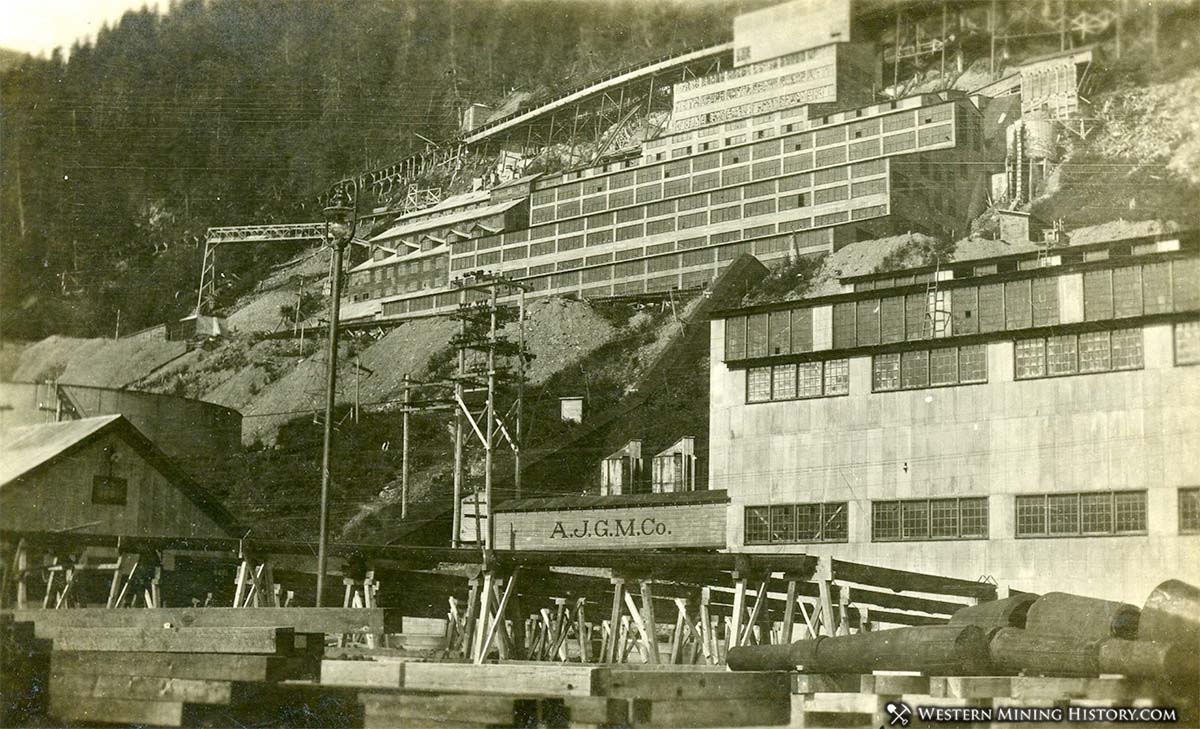
Numerous lode properties were located near Juneau and on neighboring Douglas Island where the Treadwell group, including the Treadwell, Mexican, Ready Bullion, and 700 Foot mines, was quickly developed into a major producer, yielding $26,556,470 in gold through 1905.
Total gold production of the Juneau district from 1882 through 1959 was 6,883,556 ounces – 66,279 ounces from placers, the remainder from lodes.
7. Fairbanks, Alaska
The Fairbanks district, with a land area of about 300 square miles, has produced more gold than any other district in Alaska. It is predominantly a placer district, although it also ranks high among the lode districts.
Although gold was known to be in this area as early as 1878, the extreme isolation of the area, combined with discoveries in other areas, kept miners away. Some placer mining began here in 1902, but most of the early miners became discouraged and left after learning that the rich, easily accessible placers were few and that the large, lower grade deposits were buried and required processing large volumes of material with special machinery.
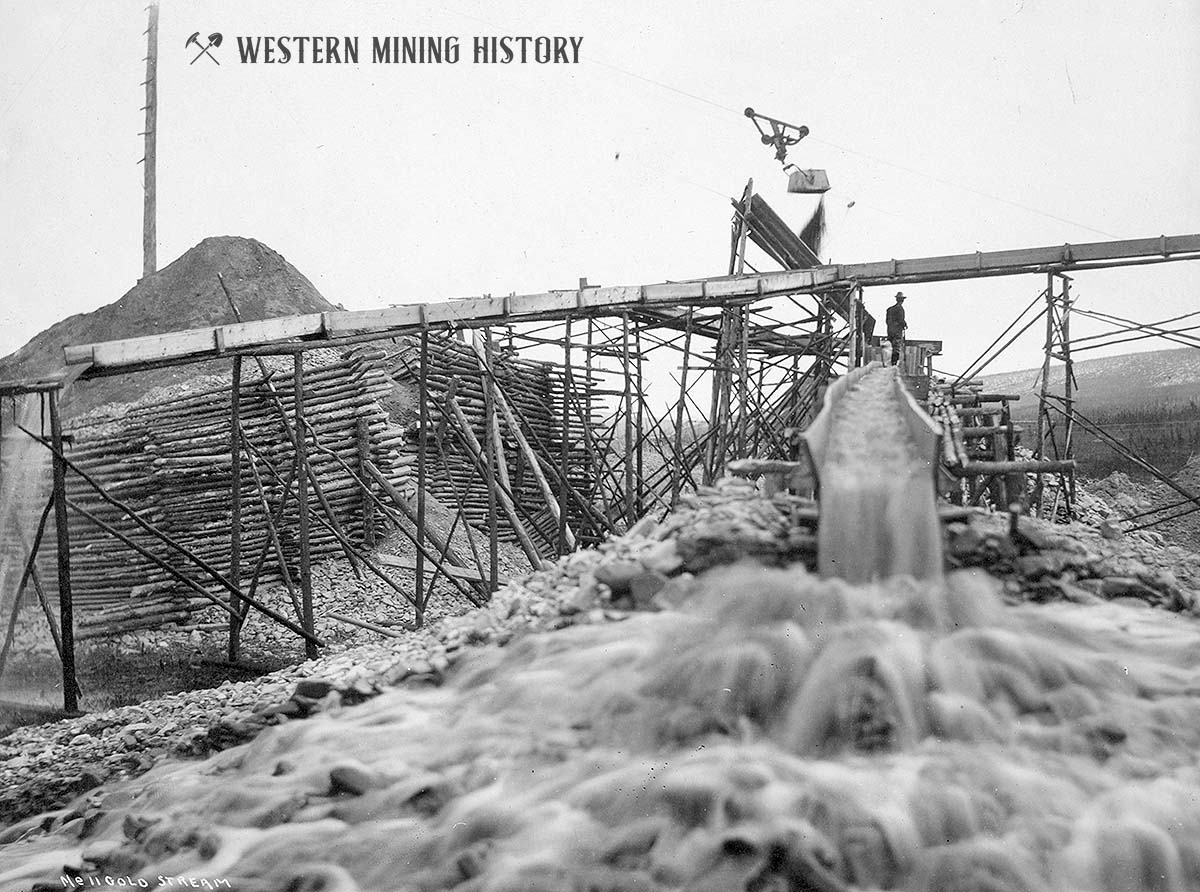
Large investments were needed to purchase and construct hoisting machinery, large dredges, and machinery for thawing the frozen overburden. But gradually, as the obstacles were overcome, it was found that the buried gravels could be mined profitably, and the district prospered as the dredges chewed through huge reserves of auriferous gravels on Dome, Ester, Vault, Cleary, and Chatanika Creeks.
The total gold production of the Fairbanks district through 1959 was 7,464,167 ounces – 7,239,696 ounces from placers, 224,471 ounces from lodes.
6. Mother Lode – Amador County, California
The Mother Lode district, about a mile wide, crosses the west-central part of Amador County from north to south.
The lode mines began producing in the 1850’s, and by 1872, 35 mills were in the district. The Old Eureka mine, 1,350 feet deep, was the largest producer on the entire Mother Lode in the early days. It was consolidated with the Central Eureka in 1924 after several years of inactivity. Production from these two mines to 1951 was about $36 million.
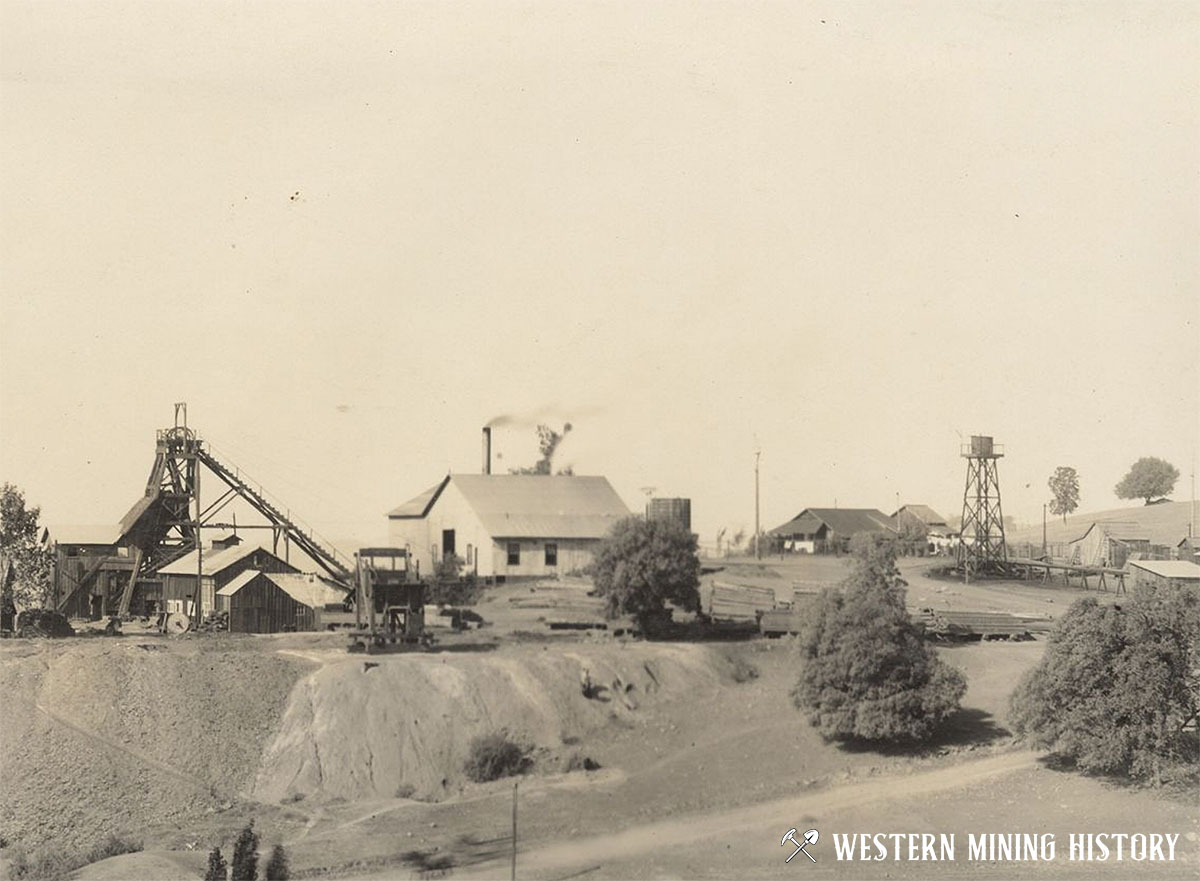
Other important Mother Lode mines in Amador County were the Kennedy, Argonaut, and Keystone, which produced $34,280,000, $25,179,000, and $24,000,000 in gold respectively. Total production of the district through 1959 was about 7,675,000 ounces.
5. Comstock Lode – Nevada
In the turbulent mining history of the West, there are a few names that stand out in bold relief one of these is the Comstock Lode, the richest mining camp in Nevada. Its fabulous bonanza ores influenced politics as well as the mining industry.
National interest centered on the production of the Comstock Lode mines when money was needed to conduct the Civil War, and the early entry of Nevada into the Union was due in large part to this contribution.
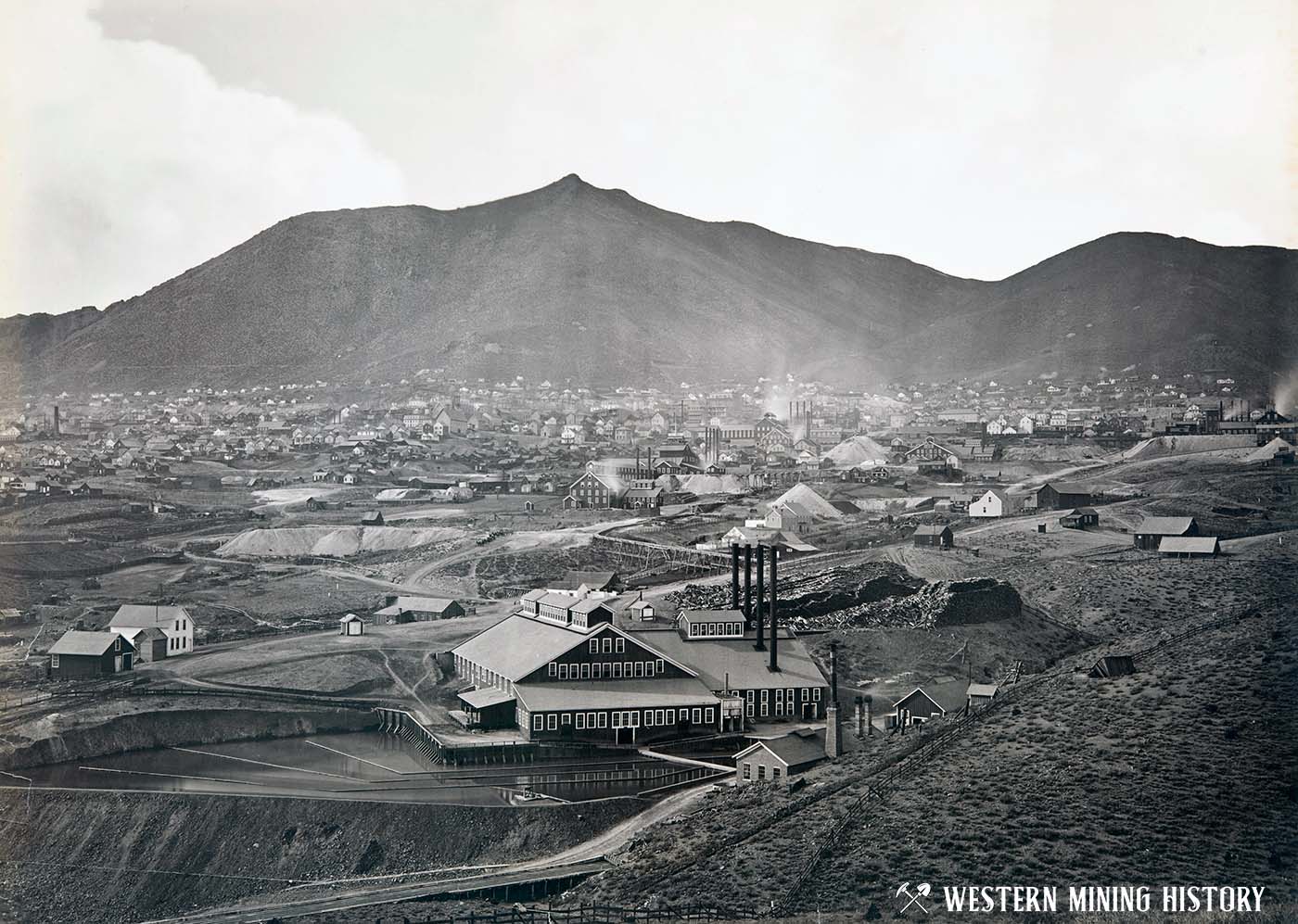
Placer gold was mined in Gold Canyon as early as 1852, but it was not until 1859 that the rich silver-gold lode deposits were discovered on Gold Hill by placer miners. The history of this district, with Virginia City as its primary town, is long and complicated, but the summary version is that this is one of the most valuable ore deposits ever mined, and one of the most historically significant districts in the West.
Although the Comstock is primarily known for its vast production of silver, significant gold was also recovered here. From 1859 through 1921, $164,023,917 (about 7,935,360 ounces) in gold was mined. Total gold production through 1959 was about 8,560,000 ounces.
4. Bingham, Utah
The USGS data used to compile this report places Bingham at number four with 10,610,000 ounces of gold Produced. We are going to stick to that placement for consistency but the rest of this entry is more or less a disclaimer:
So much mineral wealth has been produced here since the USGS report was made that the number four position is no longer valid. Bingham is the largest open-pit mine in the world, and likely the longest operating mine in the United States. Whereas most of the data in this report, which was compiled in 1959, remains accurate because very little activity occurred after that date in other areas, Bingham has produced massive quantities of metals almost continuously until the present day.
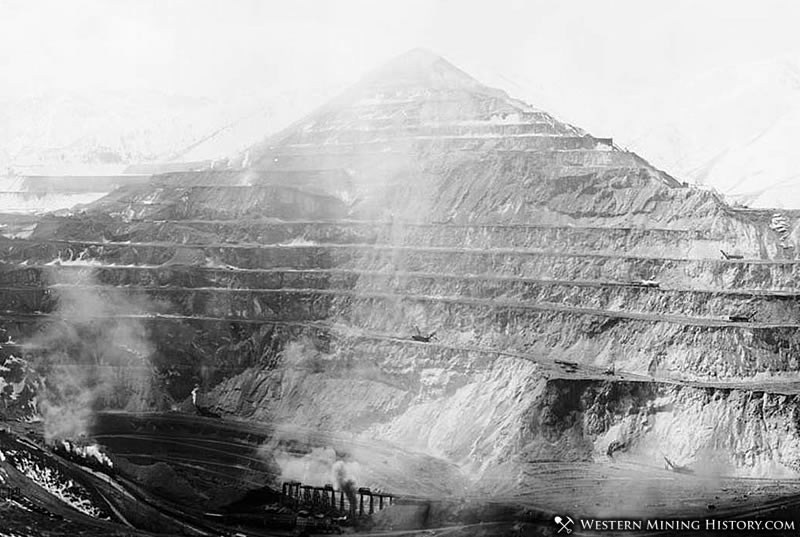
It was reported that as of 2004, almost 20 years ago, that over 23 million ounces of gold have been recovered here, mostly as a byproduct of copper production. That number would put Bingham at number two in this list, but the production that has occurred since 2004 possibly puts Bingham in the number one spot, although that can’t be verified without the most recent production statistics.
3. Grass Valley-Nevada City, California
The initial rush to this area took place in 1850 after rich gravels were discovered near the present site of Nevada City. In October of the same year, the first lode discovery was made at Gold Hill on the outskirts of Grass Valley.
The discovery at Gold Hill was followed by discoveries of veins at Ophir Hill, Rich Hill, and Massachusetts Hill, and by 1867 most of the major mines of the district had been located. Grass Valley, where 1,600 men were working and 284 stamps were crushing the ore, was then one of the leading camps in California.
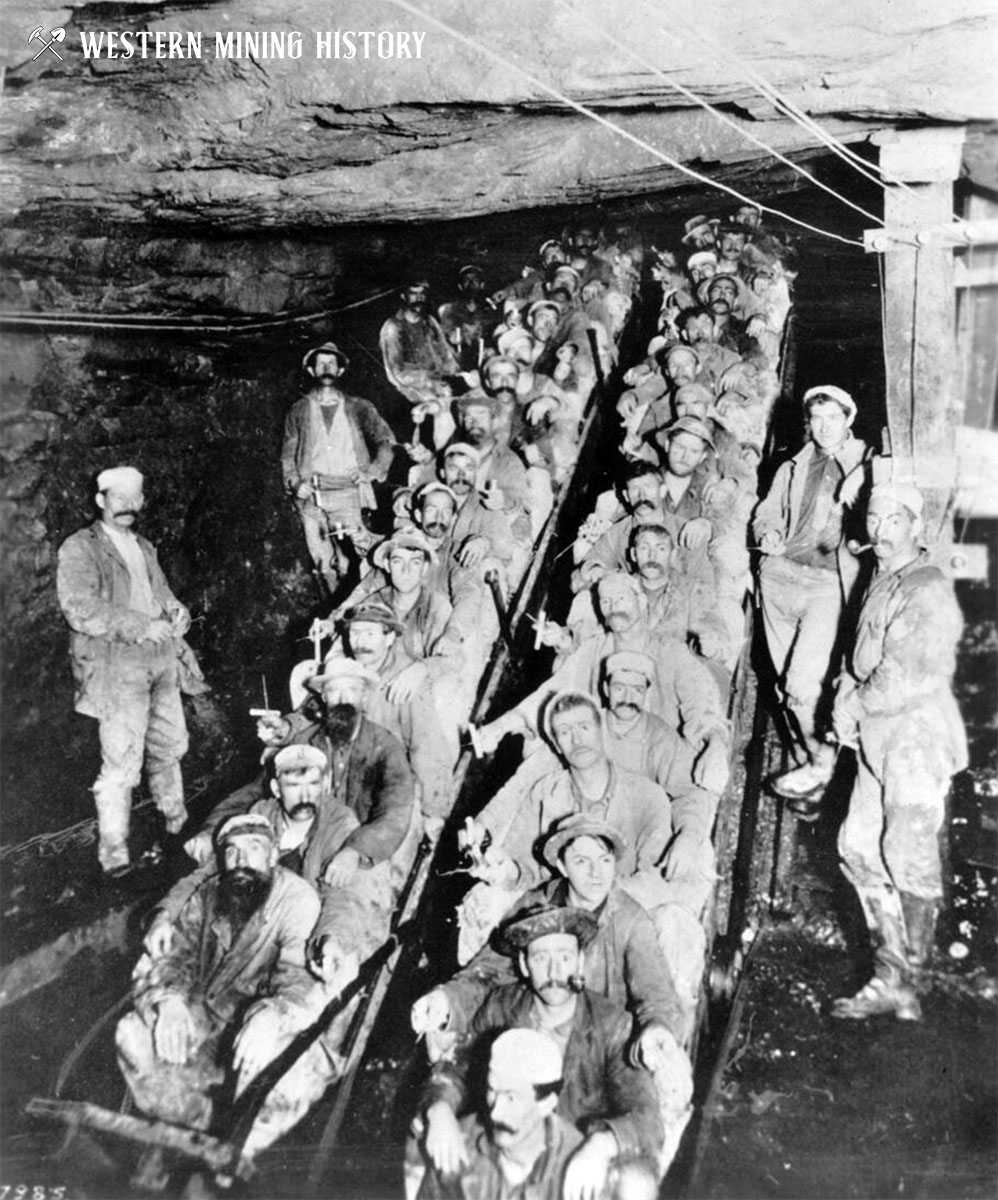
Meanwhile new discoveries of lode deposits were made at Nevada City, and quartz mining became dominant there after 1880. Some of the important mines at Nevada City are the Champion, Providence, Canada Hill, Hoge, and Nevada City. The Empire, North Star, and Idaho-Maryland mines have accounted for more than two-thirds of the production of Grass Valley and have exerted considerable influence on the economic life of the community.
Production of the Grass Valley-Nevada City district is difficult to determine accurately because of the incompleteness of the early records. Of the estimated $113 million worth of production from 1849 to 1893, at least 60 percent was credited to the lode mines. From 1903 through 1958, Nevada County produced 7,119,353 ounces of lode gold and 286,655 ounces of placer gold.
2. Cripple Creek, Colorado
Though prospectors were active in the Pikes Peak region as early as 1859, they overlooked the ores of Cripple Creek. In 1874, a few fragments of gold ore were found in the Mount Pisgah area, but they generated little sustained interest. Between 1880 and 1890, Robert Womack, an itinerant prospector and rancher, found gold ore in numerous shallow pits and diggings in the Cripple Creek area, which at that time was a cattle ranch.
Womack’s persistence finally roused the curiosity of others, who bought his claims in 1891. At about this time W. S. Stratton became interested in the discoveries and noted that much of the ore which the prospectors considered to be galena was in reality a gold-bearing mineral that was later found to be the gold telluride, sylvanite.
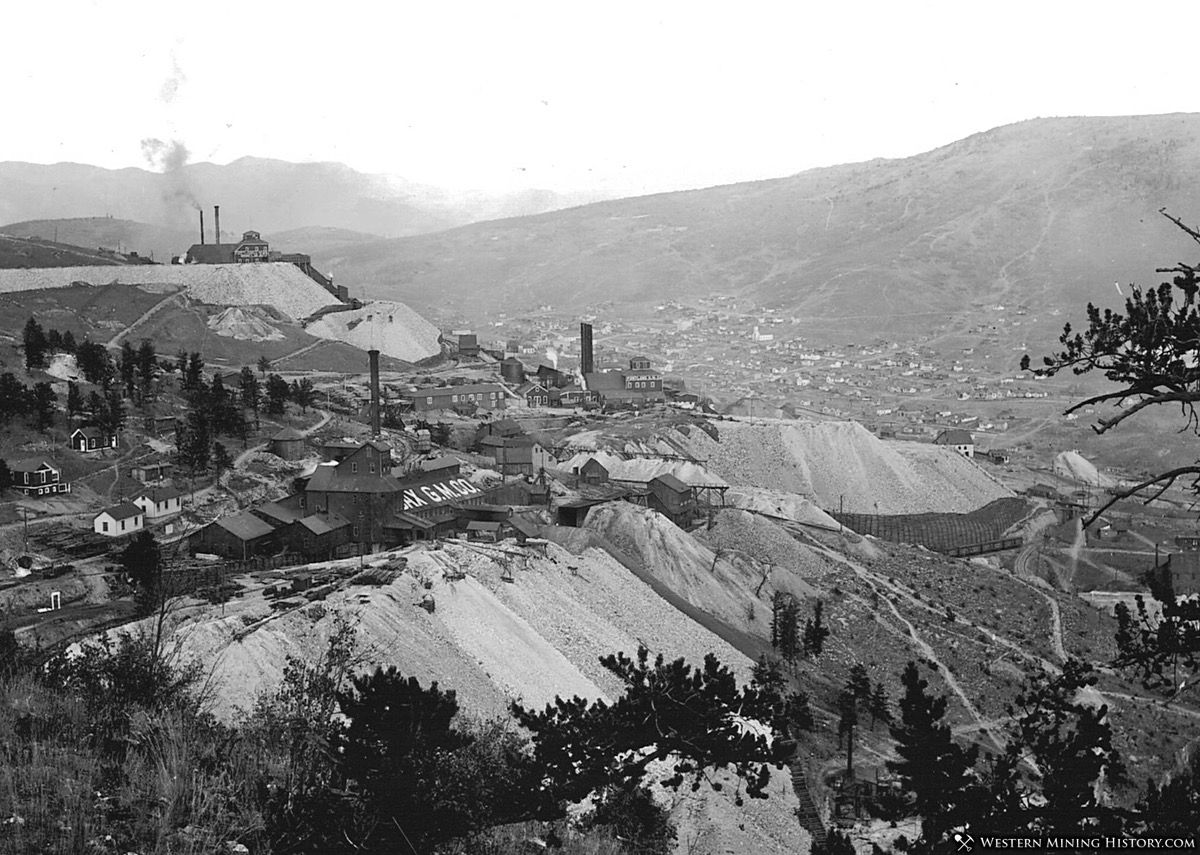
By 1893 many of the major mines of the district, among them the Portland, Independence, Granite, and Strong, were in production. Labor strife in 1894 caused a temporary setback, but new mines, including the Vindicator, Golden Cycle, Victor, Isabella, and Cresson, were opened in the following few years.
Peak production was in 1900, when 878,167 ounces of gold were mined. Activity slowly declined until 1934, when the-price of gold was raised.
Cripple Creek is the leading gold producer of Colorado and the second most productive gold-mining district in the United States, with a total gold output of 19,100,867 ounces through 1959.
1. Lead, South Dakota
The Lead district, which includes Yellow Creek, is in central Lawrence County in the central part of the mineralized area of the Black Hills. The district contains the famous Homestake mine, the leading gold producer in the United States and the only major operation in the district.
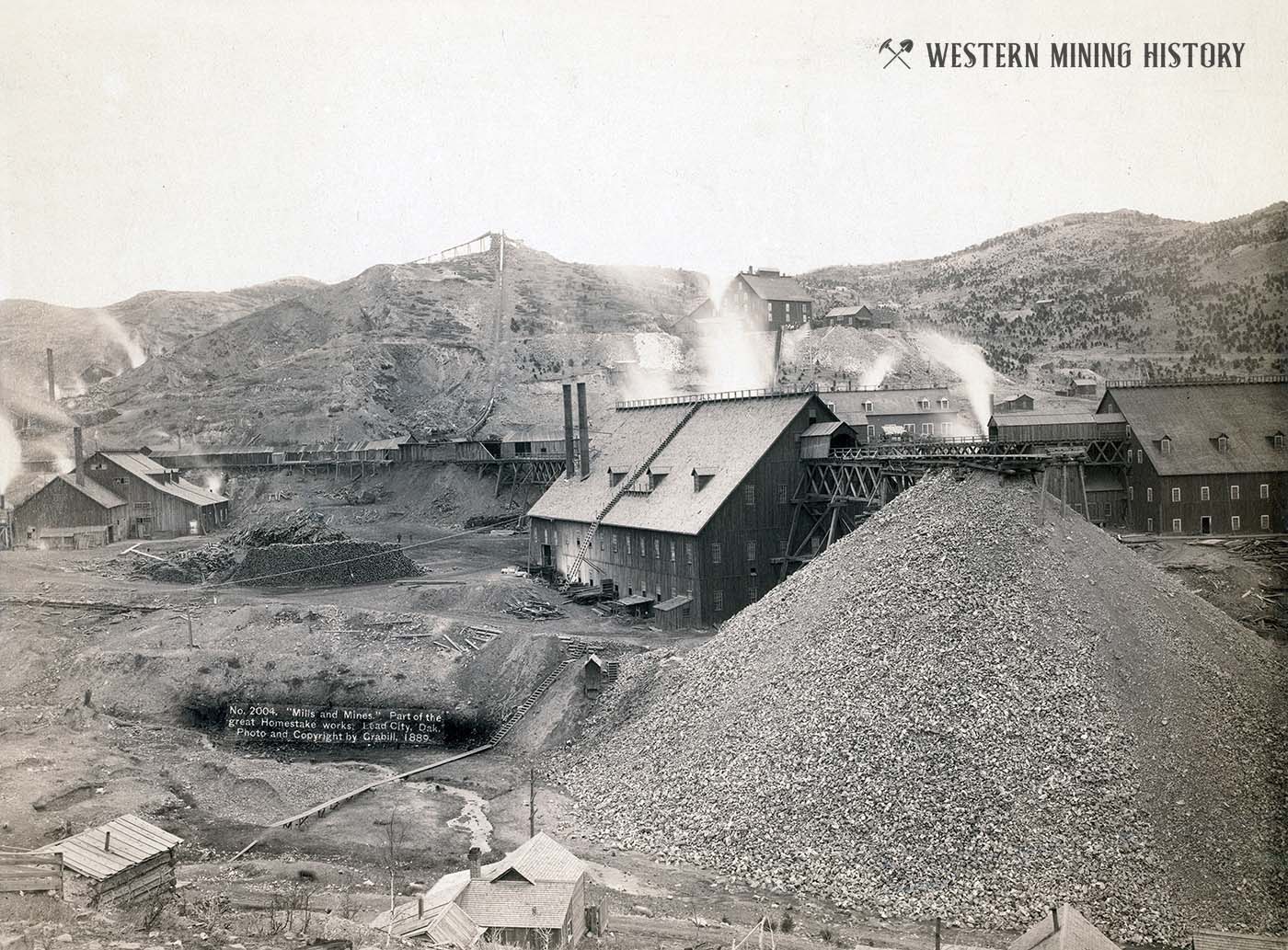
The Homestake Mining Co., which was incorporated in 1877, originally held only two fractional claims covering about 14 acres. These claims were purchased from prospectors who had located them in 1876 and had taken out about $5,000 in gold. Other companies – the Father de Smet, Highland, and Deadwood-Terra – were organized and in operation in 1878, but they were gradually assimilated by Homestake. By 1931 the Homestake Co. controlled 654 mining claims covering 5,639 acres.
The USGS report places this district at the number one spot with 24,450,00 ounces produced by 1959. However, like the Bingham Mine, the Homestake continued operations for decades after this USGS report was published. The mine operated until 2002, was over 8,000 feet deep, and produced over 43 million ounces of gold. Since the current gold production data for Bingham is not available, it is uncertain which mine has actually been the largest gold producer to date.